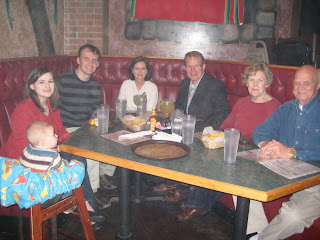
31 March 2010
21

30 March 2010
All Around The Tuin




29 March 2010
Mode - niet alleen kleding, toch?



28 March 2010
Leuven




27 March 2010
Painters
26 March 2010
Prolific Pruning



And by the way, it's Pop's birthday. Happy Birthday, Pop!

25 March 2010
Cooking -101 (that's a negative 101)
24 March 2010
Fiets

23 March 2010
De groove
22 March 2010
DST
Modern DST was first proposed by the New Zealand entomologist George Vernon Hudson, whose shift-work job gave him leisure time to collect insects, and made him aware of the value of after-hours daylight. In 1895 he presented a paper to the Wellington Philosophical Society proposing a two-hour daylight-saving shift, and after considerable interest was expressed in Christchurch, New Zealand he followed up in an 1898 paper. Many publications incorrectly credit DST's invention to the prominent English builder and outdoorsman William Willett, who independently conceived DST in 1905 during a pre-breakfast ride, when he observed with dismay how many Londoners slept through a large part of a summer day. An avid golfer, he also disliked cutting short his round at dusk. His solution was to advance the clock during the summer months, a proposal he published two years later.
Willett lobbied unsuccessfully for the proposal in the UK until his death in 1915. Starting on 30 April 1916, Germany, its World War I allies, and their occupied zones were the first European nations to use Willett's invention as a way to conserve coal during wartime. Britain, most of its allies, and many European neutrals soon followed suit. Russia and a few other countries waited until the next year and the United States adopted it in 1918. Since then, the world has seen many enactments, adjustments, and repeals.
So . . . we go to all that trouble to change the clocks worldwide 'cause of a bug collector, lazy Londoners, and a rabid golfer. I'm still not sure it makes a lot of sense and there have probably been numerous "reasons" and justifications for it since the beginning.
I suppose this goes right along with the "reason" for summer vacation for school kids. It supposedly was originally given for kids to work on family farms (there's that farming thing again), but that doesn't quite jibe with Spring planting and Fall harvest ??
Change is difficult . . . even when it makes perfect sense.
21 March 2010
Family Time

20 March 2010
NYC


































